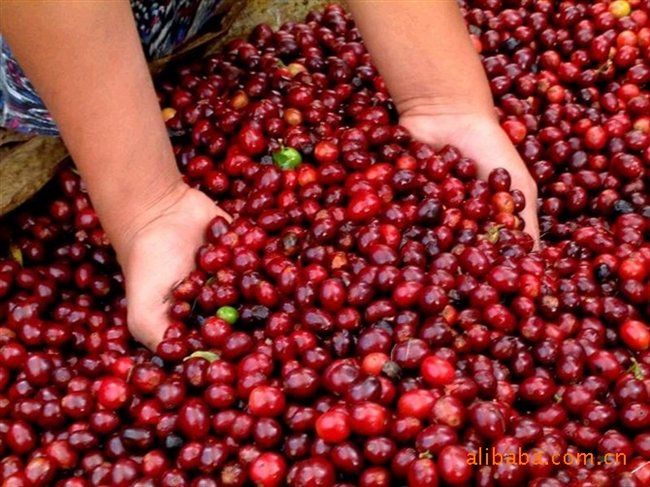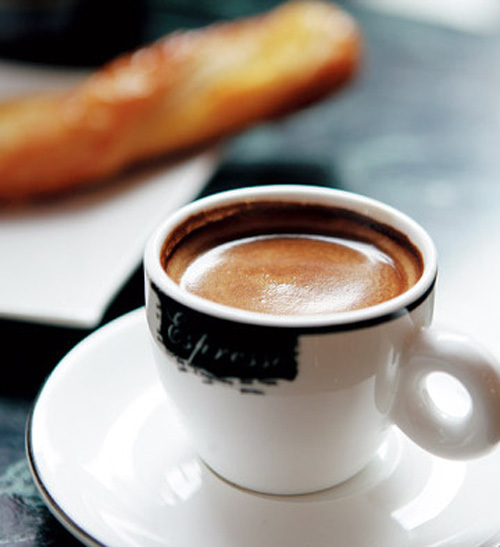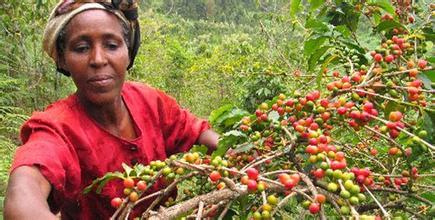The evolution of coffee from fruit to raw beans to understand the change process of coffee beans

In the middle of the fruit of coffee is a pair of oval seeds, which are covered with outer skin, inner pulp and pulp. Ripe fruit spoils in a short time without treatment. Refining is to remove the skin and pulp of the coffee fruit, and then take out the seeds. Generally speaking, about 1 kg of raw coffee beans can be obtained from 5 kg of coffee fruit.
There are three refining methods: drying type, water washing type, and compromise between the two-semi-washing type.
Drying refining method:
After the fruit is harvested, the raw beans are dried, shelled and taken out by natural (sun) drying or machine drying. The method of natural drying is to pile up the fruit in the open air and dry it in the sun. To avoid uneven drying or fermentation, it must be stirred at the right time.
The cherry-red fruit will turn black after a week in the sun, and the skin and flesh will become hard and easy to take off. At night, cover with a tarp to block the night dew and make it a black "dry cherry".
The natural drying method has the advantages of simple operation process, low equipment investment and relatively low cost, but it is subject to weather conditions and takes time, so it is easy to be mixed with too many impurities such as defective beans.
The most famous mocha in Yemen. Mokha Mattari (Matali) coffee. It has a unique sour taste and mellow thickness. It is the representative of natural drying, and like Mantenin in Sumatra, beans have irregular appearance and a lot of impurities. Originally, when it comes to Ethiopia, the best-known mocha is refined by natural drying. Mokha Harrar coffee, but recently there has been an increase in Ethiopia's water-washed coffee beans. Sidamo and Djimmah have gradually switched to water-washing refining, and these high-end products are mainly exported to Europe.
Washing type refining method:
The method of washing refining began in the mid-18th century. In the refining process, the pulp of the coffee fruit is first removed, then the residual mucous membrane on the inner pericarp is removed by a fermentation tank, and the beans are washed and dried. The difference between non-washing refining and water-washing refining is that the non-washing refining method dries and then removes the pulp, while the washing method removes the pulp and then dries.
The washing refining method can remove impurities and defective beans through each step, so the appearance of raw beans is uniform, it is generally considered to have high quality, and the trading price is higher than that of coffee beans refined by natural drying.
The biggest disadvantage of water-washed coffee is that the coffee beans are easy to get the smell of fermentation during fermentation, and the beans will be stained with the smell of fermentation, most of which are due to the lack of management and maintenance of the fermentation tank. Soak the coffee beans with mucous membrane on the endocarp in the fermentation tank for one night to remove the mucous membrane. However, if the fermentation tank is not cleaned completely, excessive changes in temperature and humidity will cause changes in the microorganisms in the fermentation tank, which will cause coffee beans to be stained with fermented flavor.
Semi-washing refining method:
This is the discount between drying type and washing type. The practice is to wash the harvested coffee fruit, remove the skin and pulp mechanically, dry it with sunlight, and then dry it with a machine. It is different from the washing refining method in that the coffee fruit is not put into the fermentation tank in the process, and the quality is more stable than the drying refining method. The Silado region of Brazil adopts the semi-washing refining method.
A Collection of Coffee Taste
Source:
VisibleCafe's blog
Important Notice :
前街咖啡 FrontStreet Coffee has moved to new addredd:
FrontStreet Coffee Address: 315,Donghua East Road,GuangZhou
Tel:020 38364473
- Prev

Prevent the extraction of coffee tannins if you make a good coffee correctly to prevent the astringency in the coffee.
Coffee contains a variety of ingredients, extraction is not to extract all of them. There is usually this rule: if the amount of coffee powder is constant, the amount of extraction of soluble components is determined by the degree of grinding and time. The finer the grinding degree of coffee powder is, the longer the extraction time is, the more ingredients will be obtained. According to the experiment, if all the ingredients that can be extracted from the quantitative coffee powder are extracted.
- Next

The difference between hand-picking method and shaking method of coffee beans different methods are adopted in different areas.
The harvest time and methods of coffee vary from place to place, generally speaking, about 1-2 times a year, sometimes up to three or four times. The harvest time is mostly in the dry season. In Brazil, for example, around June, it starts from Basiya in the north-east and ends in Parana in the south around October. The harvest period of Central American countries is from September to January next year, from lowland to high.
Related
- What is the meaning of lactic acid fermentation with coffee bean treatment?
- How to judge the state of foam by sound?
- How does the latte pull out the unicorn pattern? Come to get for a little trick to improve the flower pull!
- Will flower pulling affect the taste of the latte?
- Do you know the history of coffee?
- The difference between honey treatment and sun washing what is raisin honey treatment?
- What kind of milk can a novice use to make coffee foam to keep the foam longer? The correct method and skills of milking tutorial sharing
- Why do washed coffee beans taste sour? Flavor characteristics of washed Coffee
- Introduction to the skill of how to practice the size and height of water injection around the circle of hand-brewed coffee
- How do beginners practice coffee flower drawing from scratch?

